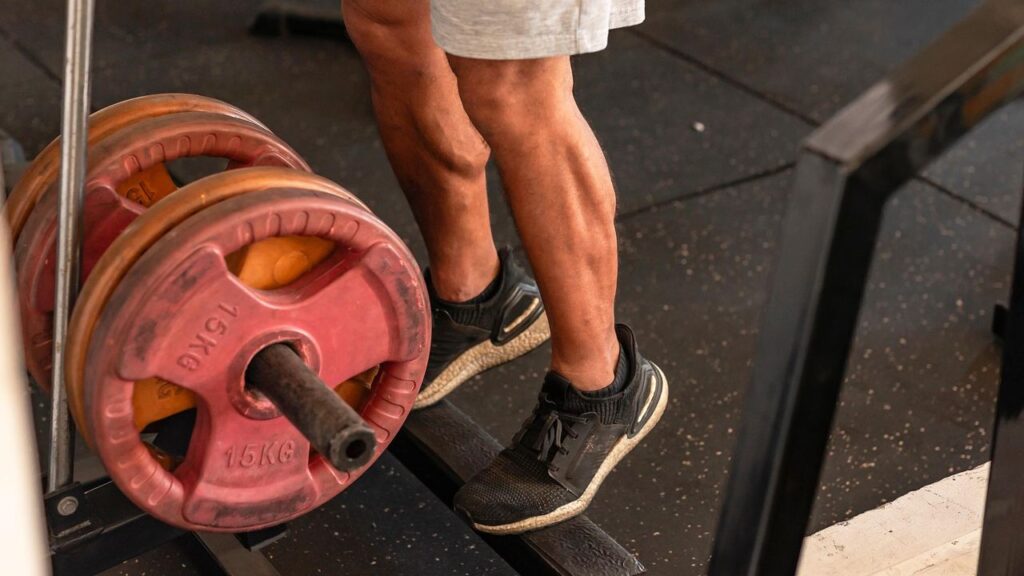
Dedicated anonymous man at the gym setting does calf raises on a weight-loaded machine with plates, focusing on lower body strength.; Shutterstock ID 2448717549; purchase_order: -; job: -; client: -; other: -
Shin splints, medically known as medial tibial stress syndrome, impact many athletes and fitness enthusiasts, particularly those engaged in high-impact activities. This common condition often arises from overtraining, repetitive movements, or inappropriate footwear, leading to inflammation of the muscles and connective tissue around the shins. According to research from The Cleveland Clinic, untreated shin splints can escalate into stress fractures, posing a serious risk for runners, dancers, and similar athletes.
To combat this issue, personal trainers suggest a series of targeted exercises designed to alleviate pain and prevent future occurrences. Below are five effective exercises that can strengthen the muscles involved and enhance overall lower-body stability.
Effective Exercises to Alleviate Shin Splint Pain
Before starting any new exercise routine, it is advisable to consult with a healthcare professional or a certified personal trainer to ensure proper technique and safety. The following exercises require minimal equipment, including a pair of dumbbells, a resistance band, a yoga mat, and a stable surface.
1. Calf Raises
Begin by standing tall with your feet together and engaging your core. Maintain a neutral spine as you lift your heels off the ground, rising onto your toes. Hold this position for a few moments before lowering your heels back down under control. Aim for 15 repetitions to strengthen the gastrocnemius and soleus muscles, which can help reduce impact on the ankle joint and shinbone.
2. Banded Hydrants
Position a looped resistance band around your upper thighs and get into a four-point stance on the mat. Engage your core, ensuring your spine remains neutral. Lift your left knee out to the side until your inner thigh is parallel to the floor. Hold for a few seconds, then return your knee to the starting position. Perform 15 repetitions on each side. This exercise enhances hip and core stability, essential for proper movement mechanics.
3. Single-Leg Deadlifts
Stand upright with your feet hip-width apart, holding a moderately heavy dumbbell in your right hand. Slightly bend your left knee and lift your right leg behind you while lowering the weight toward the floor. Maintain square hips and a neutral spine throughout. Once you reach the limit of your range, squeeze your left glute to return to the starting position. Complete 15 repetitions on each side, using a wall for balance if necessary. This exercise builds strength in the hips and glutes, crucial for stabilizing your pelvis during activities.
4. Step-Ups
Stand with your feet hip-width apart and engage your core. Place your right foot firmly on an elevated surface. Press through your right foot to step up, following with your left foot, then lower back down with control. Repeat for 15 repetitions before switching sides. To increase difficulty, consider using dumbbells or ensuring your step is near a wall for additional support.
5. Wall Sits
Position yourself facing a wall with feet hip-width apart. Lean against the wall and slide down until your upper thighs are parallel to the floor. Hold this position for 15-30 seconds to strengthen your quads and hamstrings, essential for shock absorption during high-impact activities.
Benefits of Targeted Exercises
Incorporating these exercises into your routine can significantly enhance the strength, stability, and endurance of the muscles supporting lower-body movement. Calf raises primarily target the muscles in the lower leg, while banded hydrants and single-leg deadlifts focus on the core, hips, and glutes, all critical for maintaining proper walking and running mechanics. The step-ups and wall sits help condition the quads and hamstrings, enabling them to better absorb shock during physical activities.
Effective training not only addresses existing issues but also plays a pivotal role in preventing future injuries. By focusing on strength and stability, individuals can enjoy their favorite activities without the setback of shin splints.






